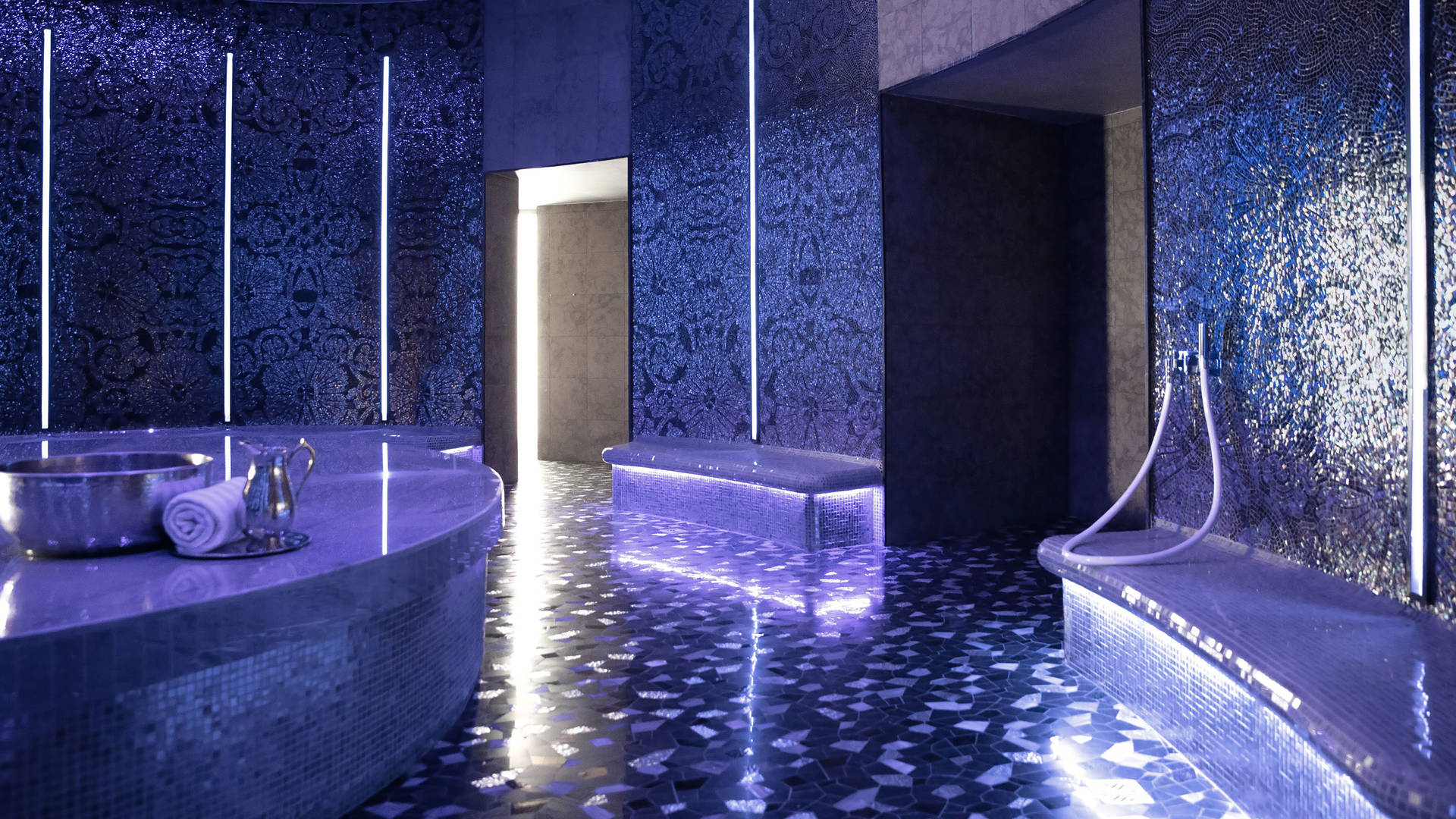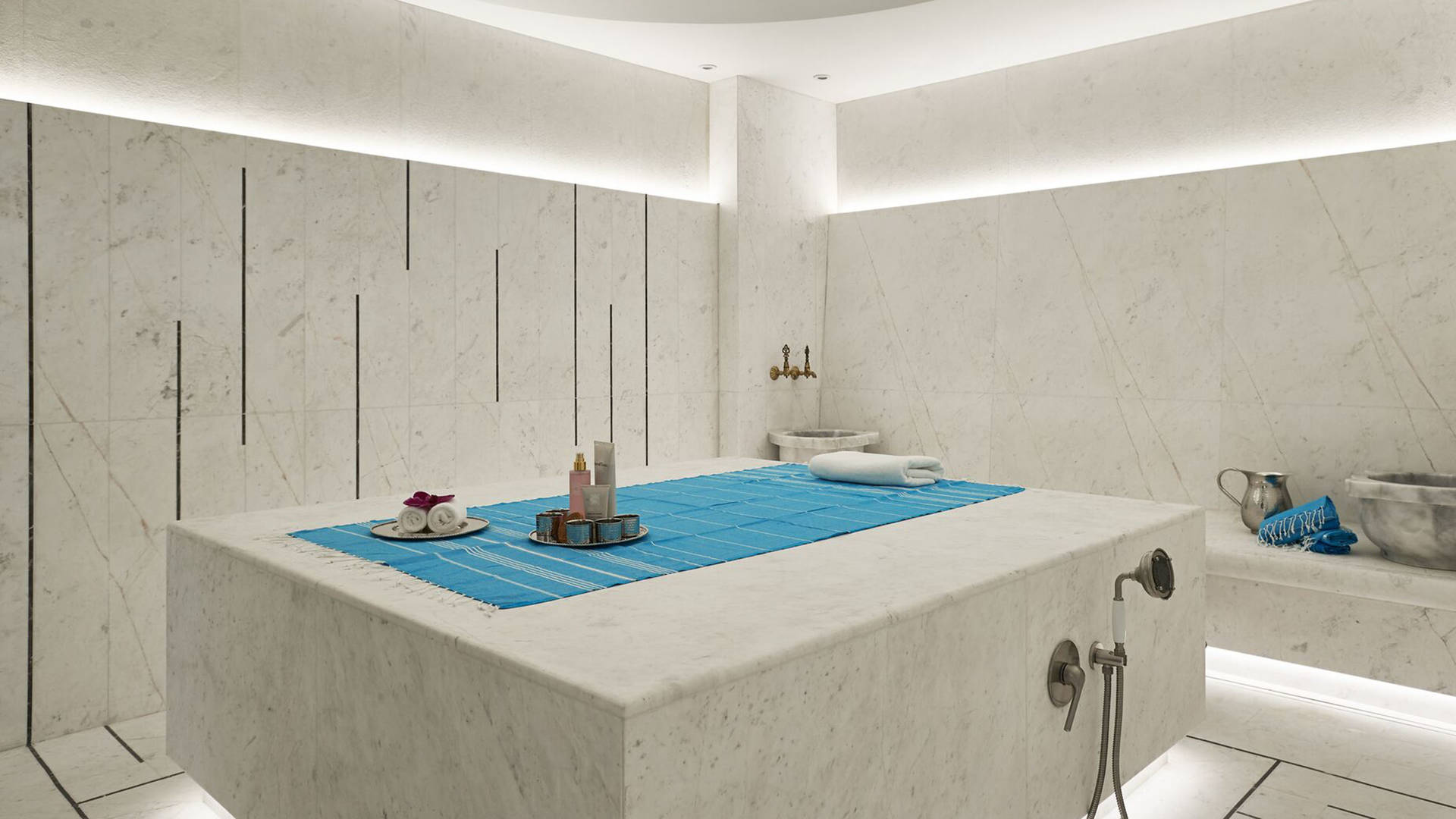Related posts
Activity
10 breathtakingly beautiful swimming pools
Wellness
A quick guide to mindfulness
Wanderlust
Reflecting on the beauty of Dubai
Rooted in the ancient traditions of Roman and Byzantine bath houses, the hammam originated in Arabic culture as a place to prepare for prayer. As they grew in popularity across the region throughout the late 1400s, these beautiful bathhouses were commonly found next to mosques and medinas. Offering a tranquil escape from the stresses and strains of everyday life, a journey through a hammam sees visitors move between designated warm, hot and cold areas – the idea is to perspire, exfoliate and cleanse before plunging into a reviving cold-water shower and enjoying a relaxing massage treatment.
Embark on a spa journey
Central to any hammam visit is a body-cleansing ceremony that comprises three stages. First, heated walkways lead to a succession of saunas and steam rooms that are intended to raise people’s temperatures in preparation for the second stage – a vigorous body polish using a traditional kese mitt. This is usually administered by an attendant while lying on a large marble stone that continues to infuse the body with warmth. The final stage invites guests to rinse off under cold running water and wash themselves with a moisturising olive oil soap. Of course, today many hammams offer a range of lavish treatments that take place alongside the exfoliation and cleansing stages, such as honey-infused face packs, conditioning hair masks and rosewater wraps.
While hammams swapped the series of pools that featured in the bathing traditions of the Roman Empire for an invigorating shower, destinations such as the Talise Ottoman Spa at Jumeirah Zabeel Saray offer plenty of places to soak up the serenity, from bubbling Jacuzzis to indoor saltwater Thalassotherapy swimming pools. As the spa journey comes to a close, guests are invited into cooling relaxation areas, where they can sip a glass of aromatic Arabian tea.

A nod to our Ottoman heritage
Hammams remain a destination for cleansing and bathing rituals, and continue to offer an opportunity for friends and colleagues to socialise in a supremely relaxing and intimate environment. For example, our magnificent hammam at Jumeirah Zabeel Saray spans 8,200sqm and offers separate spas for men and women, as well as social areas that are strewn with jewel-coloured cushions, indoor loungers and outdoor cabanas. There’s also a secluded space that can be exclusively reserved for private groups and an entire floor is dedicated to couples. It’s a place where partners can enjoy being pampered together in one of two spacious treatment suites, which are fitted with saunas and whirlpools, before taking time out in the steam bath and lavish relaxation areas.
Just as the elaborate interiors of the Jumeirah Zabeel Saray hammam are inspired by the marble decorations, mosaics and murals that were typical of the ancient palaces of the Ottoman era, the wellbeing offer at the adjoining Talise Ottoman Spa draws on age-old healing philosophies. Regal ingredients such as damask rose, which is sourced from the Himalayas, oud and frankincense combine in the Ottoman Opulence wellness ritual that incorporates traditional stress-relieving massage-techniques.

Treatments using traditional ingredients
These age-old bathing houses often relied on local ingredients, and that’s still the case at Spa at Jumeirah at Saadiyat Island Resort. Laid out along the lines of a grand Moroccan hammam, traditional cleansing, exfoliation and detoxifying rituals are delivered using the lavish Hammamii range that’s inspired by beauty-promoting recipes passed down through countless generations. The focus on provenance continues with the Emirates Hammam treatment that draws on the moisturising properties of dates from Ras Al Khaimah and mineral-rich camel’s milk. Even Arabian coffee grounds and aromatic za’tar are combined with argan oil to polish and nourish the body. And today, it’s not unusual for some modern flourishes to be added to these timeless traditions – the Moroccan Hammam treatment elevates the soap used in the cleansing stage with a fragrant infusion of mint and eucalyptus leaves, will the exfoliant is scented with Moroccan citrus and clay powder from the Atlas Mountains.

Experience the grandeur and tranquility of the traditional hammam when you stay at Jumeirah Zabeel Saray or Jumeirah at Saadiyat Island Resort.
